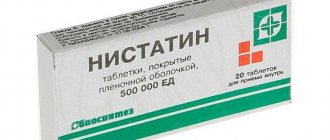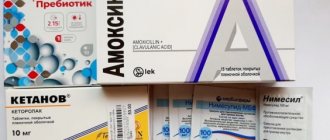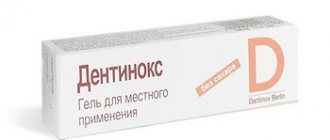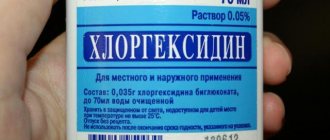What is burnt alum
Burnt alum is a powdery substance that is obtained by heating a potassium-aluminum compound. After heat treatment, the substance is ground and sieved to isolate the hygroscopic powder. Burnt alum is white, odorless, and has a sour-astringent taste. Natural origin allows you to exclude perfume components, fragrances and artificially synthesized substances from the composition.
You can buy burnt alum in 50 g plastic jars. The instructions indicate that the product is intended for external use. It does not completely dissolve in water and tends to clump when left in the open air.
Manufacturers indicate only 100% crystalline powder of potassium alum in the composition.
Description
Burnt alum is a unique substance created on the basis of traditional potassium aluminum samples. To obtain them, the starting material is heated to 160 degrees Celsius, after which it is evaporated until 50% of the original volume is lost.
As a result, it is possible to obtain an absorbent, odorless, white powder, distinguished by its shape in the form of small crystals.
The finished product has the following effect:
- antibacterial;
- drying;
- hemostatic;
- cauterizing;
- enveloping.
In addition, alum quickly eliminates itching and other discomfort. As a result, help with stomatitis is guaranteed in every case.
How burnt alum works
When applied topically, the powder acts in several ways:
- relieves inflammation and disinfects;
- dries;
- relieves itching;
- prevents and eliminates unpleasant odors.
The substance does not irritate the skin at the site of application. After application, it forms a colloidal film that envelops the nerve endings. It relieves pain, itching and burning sensations, and discomfort from insect bites.
Symptoms
Common symptoms of stomatitis are pain, burning, swelling of the mucous membrane and redness, and bad breath. Salivation also changes - it can be excessive or insufficient, with dry mouth. In some cases, there may be an increase in temperature and enlargement of the submandibular lymph nodes.
The types of stomatitis in children and treatment methods differ, as do the specific manifestations. For example, with aphthous stomatitis, only one large ulceration may appear, but with viral stomatitis, inflammation almost always takes the form of numerous elements or a rash merging into one focus.
Candidal stomatitis is characterized by the formation of a white or yellowish cheesy coating. It is easier to recognize traumatic stomatitis because it is preceded by damage or the source of injury is nearby - a chipped tooth or a rough filling.
In what cases will burnt alum help?
According to the instructions for the drug, burnt alum is used in:
- combating excessive sweating. The ability to adsorb moisture and reduce the functioning of glands that secrete sweat and sebum is actively used by patients with hyperhidrosis. In addition, alum is able to disinfect areas with excessive sweating and get rid of bacteria and fungi that are sources of unpleasant odors; can be used as an antiperspirant;
- prevention of skin irritations, for treating minor scratches, including after using a razor;
- therapy of dermatological pathologies: dermatitis, diaper rash, eczema, neurodermatitis, fungal infections of the feet;
- gynecology and urology – for the treatment of vulvovaginitis, balanitis;
- dentistry - for the treatment of gingivitis, stomatitis;
- cosmetology - to narrow pores, increase elasticity, relieve inflammation. Added to powder or cream.
Burnt alum powder can be used to treat festering wounds and trophic ulcerations on the skin. As a result, the damaged surface of the skin will dry out and tighten, and bleeding will stop.
Frequent stomatitis. How to quickly cure stomatitis
Go back
Stomatitis is an inflammatory disease of the oral mucosa. Persistent stomatitis, regardless of the cause, indicates a decrease in immunity and, as a result, the development of inflammation.
Symptoms of stomatitis
Pain, burning, mouth ulcers, swelling of the tongue and lips, as well as other parts of the oral mucosa, are the most common symptoms of stomatitis. Pain with stomatitis can occur both when eating or talking, and at rest with severe inflammatory changes in the oral mucosa. Advanced or long-term untreated stomatitis can affect most of the oral mucosa. In such a situation, patients with stomatitis are hospitalized.
Cause of stomatitis
The oral mucosa is the body's first barrier when encountering an infection.
Whether we eat or drink water, talk or breathe, every time a large number of different microbes rush into our body through the mouth. Often the causes of stomatitis in adults and children come down to poor hygiene and lack of adequate oral care. One of the most common causes of stomatitis is infection. Moreover, this group can include bacteria, viruses, and fungi. How ORALSEPT helps ORALSEPT® affects the cause of inflammation (bacteria and fungi) and relieves the symptoms of inflammation.
Read more
Frequent stomatitis in adults. Causes There are many causes of stomatitis, which occurs several times during the year. As a rule, repeated episodes of stomatitis develop against the background of disruption of both local and general immunity.
The main causes of stomatitis are:
- Diseases of the gastrointestinal tract
- Intestinal infections
- Smoking
- Drinking alcohol and hot drinks
- Eating food with lots of spices
- Diabetes
- Acquired immunodeficiency syndrome (AIDS)
- Radiation therapy in the treatment of cancer
And this is not a complete list of factors leading to the development of stomatitis.
Frequent stomatitis in a child. Reasons “Don’t put it in your mouth” is one of the most common comments to a child. Children try to learn everything new by tasting it. This is how the infectious agent enters the oral cavity. Stomatitis in children can be a manifestation of both an independent disease - for example, herpes, and a symptom of other infections. Stomatitis often occurs with measles (Filatov's spots) and enterovirus infection, with chicken pox and other diseases. Also, stomatitis in children can often be a manifestation of an allergic reaction or the result of an intestinal infection. The first place among the infectious causes of stomatitis in children is occupied by herpetic and candidal stomatitis.
Herpetic stomatitis in children is characterized by severely painful ulcers in the mouth. The first episode of herpetic stomatitis can last quite a long time, up to 2-3 weeks, until the body forms protective antibodies to the virus. Children refuse to eat due to pain. The disease manifests itself not only with local symptoms, but also with general ones, such as weakness, fever, headache, nausea.
Candidal stomatitis in children can appear literally in the first months of life. With candidal stomatitis, a white, loose (curdled) coating appears on the oral mucosa. Beneath it, a red, swollen, inflamed mucous membrane is visible. The cause of candidal stomatitis is a decrease in immunity and a fungal infection (fungus of the Candida species), which, as a rule, develops due to disturbances in the gastrointestinal tract or food allergies. Infants with candidal stomatitis are very restless, often cry, and quickly lose weight.
How to quickly cure stomatitis The main complaint with stomatitis is pain. And therefore, first of all, drugs that reduce pain and have an anti-inflammatory effect are prescribed. These may be non-steroidal anti-inflammatory drugs, local anesthetics. It is also necessary to prescribe antimicrobial drugs that act on the main cause of stomatitis - infection.
How to quickly cure stomatitis in a child
To quickly relieve pain and inflammation during stomatitis, local remedies are used. But children often do not know how to rinse their mouths, and due to pain they may react negatively to the use of oral medications. In such a situation, using a topical treatment spray will help.
How to quickly cure stomatitis in an adult
Stomatitis in adults often affects general well-being.
In addition, people whose professional activities involve the active use of speech cannot fully perform their work when stomatitis occurs. In such a situation, either a temporary refusal to work for treatment or the use of drugs that quickly relieve pain and inflammation, and which can be taken with you and used on the go, is required. Remedy for stomatitis – what to choose? More recently, when treating stomatitis, doctors prescribed several drugs at the same time: for pain, inflammation, anti-infectives. It was a set consisting of gels, rinses, tablets for oral administration and topical use. Currently, in the treatment of stomatitis, agents are used that act directly on the site of inflammation and have a complex effect. Oralcept spray in such a situation is the best option. Acting locally on the source of inflammation, it quickly, within a minute*, reduces pain and reduces the inflammatory manifestations of stomatitis. In addition, it has a local antiseptic effect and fights bacterial and fungal infections. Oralcept has a pleasant, delicate mint taste. The compact plastic bottle of the drug with a special nozzle is convenient to carry with you.
*WITH. Simon-Savois, D. Forest. - "Local anesthetic activity of benzydamine", Modern Therapeutic Research, Vol. 23, No. 6, June 1978, Department of Dentistry, University of Montreal, Montreal, Canada
How to use burnt alum powder
The manufacturer prescribes the use of the drug, if indicated, externally as a powder; the frequency of administration is not limited.
Wounds and ulcers are treated with a solution of powder. To prepare, take ½ teaspoon of the substance and add to 200 ml of hot water. The composition is applied to the wound surfaces the required number of times; a gauze bandage may be applied.
When used simultaneously with other drugs, the powder does not react with them.
Instructions for use
Alum is used as a mouth rinse for stomatitis.
To prepare the solution, add 0.5 tsp to a glass of boiled water. powder and stir it thoroughly.
In this case, the consistency of the solution becomes slightly viscous (like laundry starch), and the taste becomes sour. Should be used 5-7 rubles/day, duration of procedure is 1-2 minutes.
The use of the solution for the treatment of stomatitis in children is not prohibited, but the application pattern is modified: it is necessary to lubricate the oral cavity with a cotton swab 3-4 times a day and for 30-40 minutes. After the procedure, refrain from eating and drinking.
Recipes
A remedy to combat armpit sweating. To prevent the white powder from crumbling during application and to ensure that the composition gets directly onto the skin, it is better to prepare the composition:
- dissolve two teaspoons of burnt alum in 500 ml;
- add a few drops of essential oil with your favorite scent;
- pour the solution into a bottle equipped with a sprayer.
At first, the product must be used twice a day, then the composition can be applied to the armpit area once a day.
- For sweaty feet. In this case, dry alum is used. First you need to clean your feet with a pumice stone or a scraper. Then the surface is treated with alum. To enhance the effect, you can treat socks and shoes that are worn every day with alum. Already on the third day, sweat production decreases, cracks in the legs heal, and small wounds heal. To prevent the skin from drying out, the skin of the feet can be treated with cream.
- Face mask for enlarged pores. Ingredients you will need: one egg white, 5 grams of burnt alum powder, one teaspoon of almond or apricot oil. The protein must first be whipped into a foam, add other ingredients and mix. Apply to clean skin for half an hour. Then wash off with warm water.
Lotions, rinses
The rinse solution is prepared as follows:
- take the following ingredients: a glass of boiled water, 4-5 g of burnt alum;
- mixing until the crystals are completely dissolved;
- store the solution for no more than two days in the refrigerator;
- The liquid must be stirred before use.
To cure stomatitis in a child, you can use the method of spot treatment of ulcers with a concentrated solution.
To obtain the working fluid, you need to take 10 g of alum per glass of water. The solution is applied using cotton pads and rubbing.
The resulting solution should be used every 3 hours by rinsing. Afterwards it is recommended to treat the ulcers locally.
Reviews
According to customer reviews, burnt alum works well in treating skin problems, including complex wounds with suppuration and trophic ulcers.
However, the powder is mainly used in the fight against sweating and its consequences; it is applied instead of deodorant to the armpits, on the feet and palms, and in shoes to prevent unpleasant odors. The downside is that it stains clothes when applied.
Some buyers note that alum does not help overcome excessive sweating, but an unpleasant odor does not appear after application.











